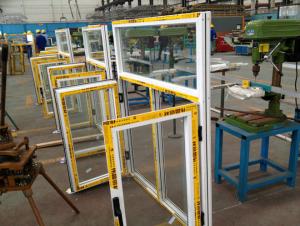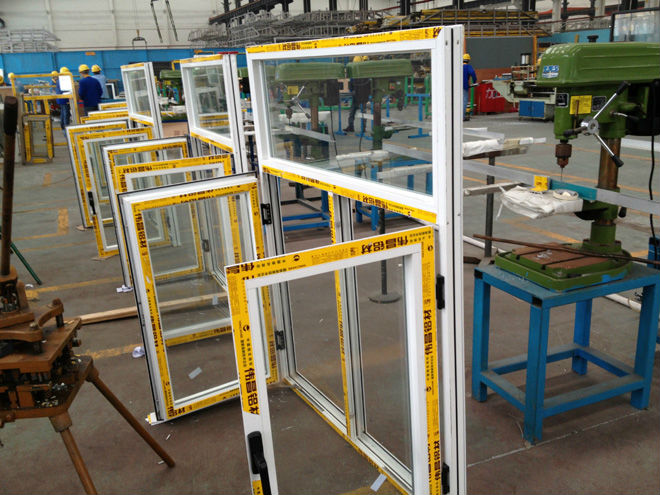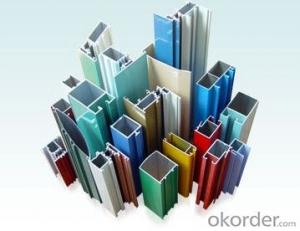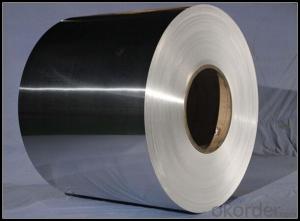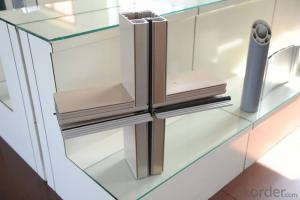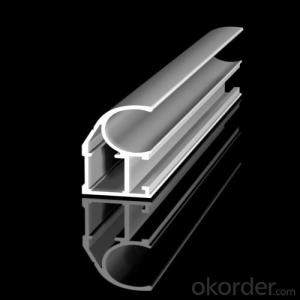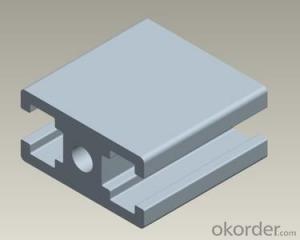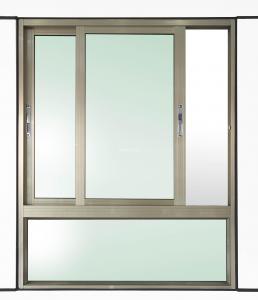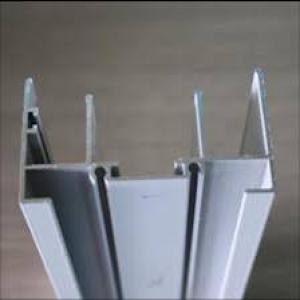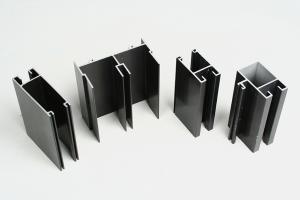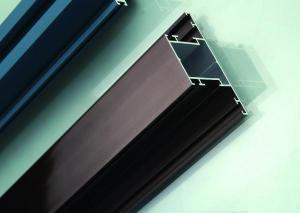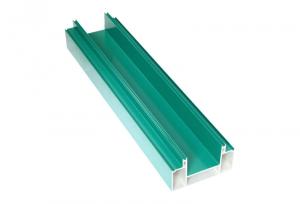Solidworks Aluminum Extrusion Profiles for Windows
- Loading Port:
- China Main Port
- Payment Terms:
- TT OR LC
- Min Order Qty:
- -
- Supply Capability:
- -
OKorder Service Pledge
OKorder Financial Service
You Might Also Like
Aluminium Profile
1)Material : 6063 6061 6060 and different aluminium alloy
2)Status:T4 T5 T6 or other special status
3)Surface treatment: mill finish, anodized sliver ,anodized bronze, anodized champagne, anodized black pearl, various power coating color, electrostatic sliver, electrostatic champagne, electrostatic golden, electrostatic titanium , machine polish sliver, machine polish bronze, wooden grain color, and Fluorocarbon spraying.
4)Annual capacity : 120000TON
5)Quality : China Nation Standard GB/T 5237 2008 (advanced class)
6)Use: can be widely using aluminium window, door, curtain wall, hand railing , normal aluminium profile, decorative and industrial aluminium profile
7)Advantage: Famous Brand reasonable&market price, soonest delivery and good after sale- service
8)Type of package:protection foam+heat contracted plastic film. / wooden packing / Metal pallet or depand on clientspecial requirement.
9)Payment term:T/T:30% of total value as deposite should paid by T/T within 3 days when confirmation ,and the remaining sum should be paid by T/T before delivery.L/C: 100% at sight
10)Delivery Day: 15-30days
11)Honor : CHINA FAMOUS TRADEMARK, CHINA TOP BRAND, ISO9001-2000, CHINA SQUARE&ROUND COMMITTEE DNV
- Q: What are the advantages of using aluminum profiles in the defense industry?
- There are several advantages of using aluminum profiles in the defense industry. Firstly, aluminum profiles offer a high strength-to-weight ratio. This means that they can provide the necessary strength and durability while being lightweight. This is particularly crucial in the defense industry where weight reduction is essential for enhancing mobility and reducing fuel consumption. Secondly, aluminum profiles have excellent corrosion resistance properties. This is particularly advantageous in defense applications where equipment is exposed to harsh environments, such as saltwater or extreme weather conditions. The corrosion resistance of aluminum profiles ensures that the equipment remains functional and reliable for extended periods, reducing maintenance requirements and increasing the overall lifespan of the components. Furthermore, aluminum profiles are highly malleable and can be easily fabricated into complex shapes and designs. This versatility allows for greater design flexibility in defense applications, enabling the creation of intricate and tailored components. Additionally, aluminum profiles can be easily joined with other materials, such as composites or steel, further expanding their potential applications in the defense industry. Another advantage of aluminum profiles is their excellent thermal conductivity. Aluminum has a high thermal conductivity compared to other metals, allowing for efficient heat dissipation in defense equipment. This is particularly important in applications where thermal management is critical, such as electronic systems or high-performance vehicles. The ability of aluminum profiles to dissipate heat effectively ensures the reliability and longevity of sensitive components. Lastly, aluminum is a widely available and cost-effective material. It is abundant in nature and can be easily extracted, making it readily accessible for defense manufacturing. Moreover, its low cost compared to other metals such as titanium or steel makes it an economical choice for defense applications, allowing for cost-effective production of large quantities of components without compromising on quality or performance. In conclusion, the advantages of using aluminum profiles in the defense industry include their high strength-to-weight ratio, corrosion resistance, versatility in fabrication, excellent thermal conductivity, and cost-effectiveness. These characteristics make aluminum profiles an ideal choice for a wide range of defense applications, contributing to enhanced performance, durability, and cost-efficiency in this critical sector.
- Q: Can aluminum profiles be used in modular construction systems?
- Yes, aluminum profiles can be used in modular construction systems. Aluminum is a lightweight and durable material that is well-suited for modular construction. It provides structural stability and can be easily fabricated into various shapes and sizes to meet specific design requirements. Aluminum profiles offer excellent corrosion resistance, making them ideal for both indoor and outdoor applications. They are also highly recyclable, making them an environmentally-friendly choice for modular construction systems. Overall, aluminum profiles offer numerous advantages in terms of strength, flexibility, and sustainability, making them a popular choice in modular construction.
- Q: Are aluminum profiles suitable for use in the telecommunications industry?
- Indeed, the telecommunications industry finds aluminum profiles to be a fitting option. Aluminum, a lightweight and durable material, offers numerous advantages in this field. Firstly, aluminum profiles possess corrosion-resistant qualities, rendering them ideal for outdoor installations like telecommunication towers and antennas which endure harsh weather conditions. This resistance to corrosion ensures the equipment's longevity and reliability. Secondly, aluminum profiles exhibit exceptional thermal conductivity properties, enabling efficient heat dissipation. This attribute holds significant importance in the telecommunications sector, where electronic components generate heat that can impair their performance. By adopting aluminum profiles, cooling systems can be optimized, guaranteeing the equipment's proper functioning. Moreover, aluminum profiles are remarkably versatile, allowing easy customization and fabrication to meet specific requirements. This empowers telecommunications companies to design and construct tailored structures, enclosures, and mounting solutions. Aluminum profiles can be conveniently assembled, disassembled, or modified as needed, offering flexibility in installation and maintenance. Additionally, aluminum profiles provide electromagnetic shielding properties, playing a crucial role in minimizing interference between different communication systems. This shielding helps maintain the quality and reliability of transmitted signals. Furthermore, aluminum stands as a sustainable material, being 100% recyclable and possessing a low carbon footprint compared to other metals. This renders it an environmentally friendly choice for the telecommunications industry, aligning with the increasing emphasis on sustainability and reducing environmental impact. In conclusion, due to their corrosion resistance, thermal conductivity, versatility, electromagnetic shielding properties, and sustainability, aluminum profiles prove to be highly suitable for implementation in the telecommunications industry. These qualities establish aluminum profiles as a dependable and efficient choice for various applications in telecommunications infrastructure.
- Q: Explain the positive environmental impacts of utilizing recycled aluminum in the construction industry.
- <p>Using recycled aluminum in construction offers significant environmental benefits. It conserves natural resources by reducing the need for mining new bauxite, the primary source of aluminum. This reduction in mining decreases habitat destruction, water pollution, and soil erosion. Additionally, recycling aluminum saves energy, as it requires only 5% of the energy needed to produce aluminum from raw materials. This energy conservation leads to lower greenhouse gas emissions and air pollution. Moreover, the use of recycled aluminum reduces landfill waste, as less material ends up in landfills. Overall, it promotes a more sustainable and eco-friendly construction process.</p>
- Q: What unique considerations or specifications are needed when utilizing aluminum profiles in cold weather conditions?
- <p>In cold climates, special requirements for using aluminum profiles include selecting materials with enhanced thermal performance to prevent condensation and frost. It's crucial to use aluminum profiles with appropriate thermal breaks to reduce heat loss. Additionally, consider using profiles with higher strength to withstand the contraction and expansion caused by temperature fluctuations. Protective coatings or finishes may be necessary to prevent corrosion from salt or other winter chemicals. Always consult with manufacturers for specific recommendations tailored to the climate conditions.</p>
- Q: Are aluminum profiles suitable for use in aerospace structural components?
- Yes, aluminum profiles are suitable for use in aerospace structural components. Aluminum is a lightweight and corrosion-resistant material that offers a high strength-to-weight ratio, making it ideal for applications in the aerospace industry. It is widely used in the construction of aircraft frames, wings, and other structural components due to its durability and ability to withstand high stress and forces during flight.
- Q: Can aluminum profiles be used in aerospace applications?
- Yes, aluminum profiles can be used in aerospace applications. Aluminum is a lightweight, strong, and corrosion-resistant material, making it suitable for various components and structures in the aerospace industry. It is commonly used in aircraft frames, wings, and fuselages due to its high strength-to-weight ratio and excellent mechanical properties. Additionally, aluminum profiles can be easily fabricated and joined, allowing for efficient manufacturing processes in the aerospace sector.
- Q: What do the 6063 and T5 represent in the aluminum profile 6063-T5?
- third, and four digits:Pure aluminum: represents the original alloyAlloy: the designation of individual alloys"- >: the back of Hn or Tn indicates the condition of work hardening or the symbol of heat treatment state-Hn: indicating the symbol for non heat treated alloys-Tn: a symbol for heat treatment alloysT5By cooling the high temperature molding process, and then the artificial aging state. Applied by cooling high temperature molding process, not through the cold processing (for straightening and leveling, but does not affect the mechanical properties of the limit), to artificial aging products.
- Q: Are aluminum profiles energy-efficient?
- Yes, aluminum profiles are energy-efficient. Aluminum is a highly conductive material, allowing for efficient heat transfer and reducing energy losses. It is also lightweight, making it easier to transport and install, saving energy in the process. Additionally, aluminum profiles can be designed with thermal breaks or insulation to further enhance their energy efficiency.
- Q: This question asks about potential health hazards related to the use of aluminum profiles in construction.
- <p>There are minimal health risks associated with using aluminum profiles in building construction. Aluminum is a non-toxic metal and does not emit harmful substances. However, during the manufacturing process, if not properly controlled, there might be concerns related to dust and fumes. Additionally, aluminum can react with other materials, potentially causing corrosion or weakening the structure. It's important to ensure that aluminum profiles are used in accordance with safety standards and guidelines to mitigate any potential risks.</p>
Send your message to us
Solidworks Aluminum Extrusion Profiles for Windows
- Loading Port:
- China Main Port
- Payment Terms:
- TT OR LC
- Min Order Qty:
- -
- Supply Capability:
- -
OKorder Service Pledge
OKorder Financial Service
Similar products
Hot products
Hot Searches
Related keywords
